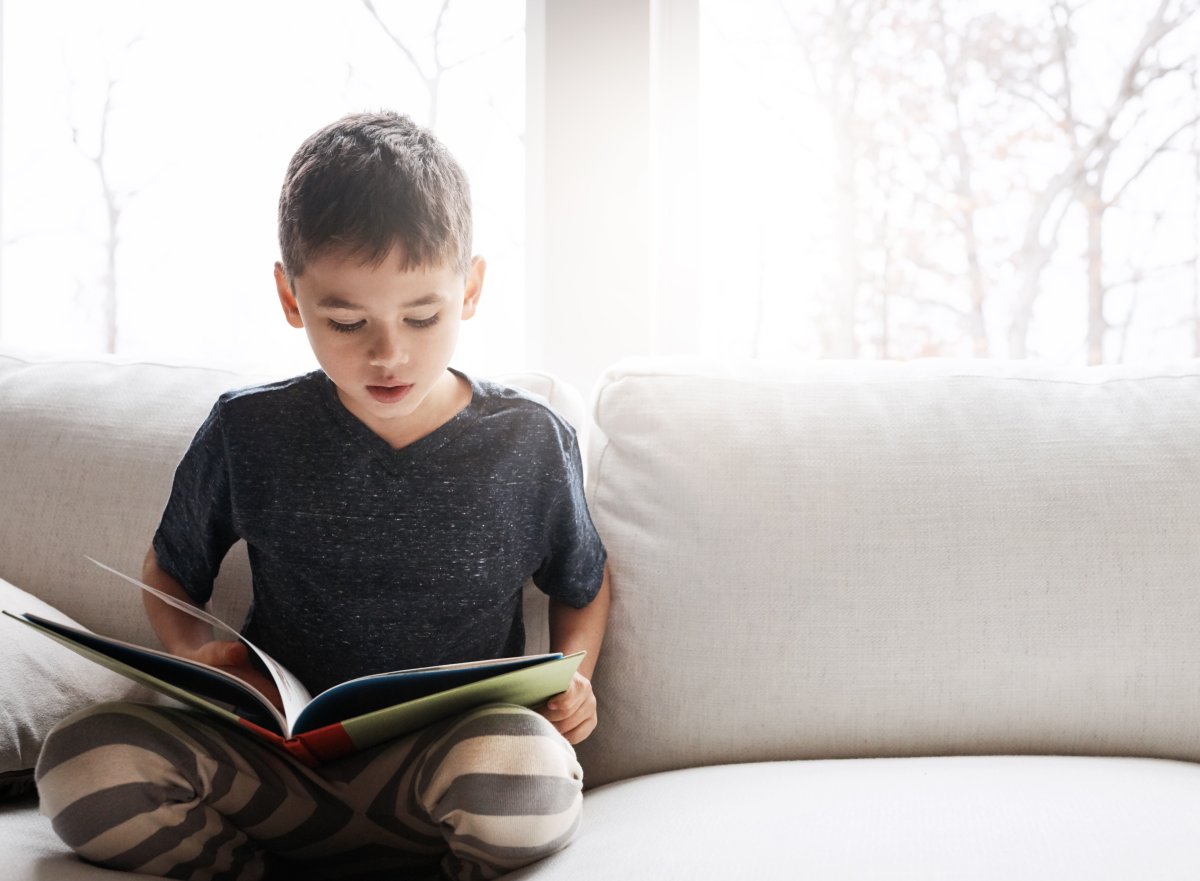The Curator independently decides what topics and products we feature. When you purchase an item through our links, we may earn a commission. Promotions and products are subject to availability and retailer terms.
Parents celebrate all kinds of milestones in their children’s lives. First steps, first words, and first foods, for example. One of the greatest things to experience as a parent is watching your children read their first words. Getting there, however, starts earlier than you’d think.

According to the Canadian Children’s Literacy Foundation (CCLF), developing early literacy skills is essential in setting your kids up for success in school. These skills also teach empathy and perspective, effective communication, and emotional and social resilience.
Nina J. Shukla, the director of the CCLF’s Early Words program, is also a registered speech-language pathologist with 15 years of experience. She says creating a language-rich environment for children starts at birth.
“That means engaging in early literacy activities,” she says. “Talking with them, being with them, and sharing books with them. That builds a language-rich environment and builds their language skills, which will help them grow up ready and with the foundational skills to learn how to read.”
Right from birth
Shukla points out that babies can’t talk, but they are always watching, listening, and learning. Their brains are ready to learn languages at birth, so fostering a language-rich environment is important.
“Those first 12 months is a sensitive period for brain development,” she says. “The brain rapidly builds the foundation for vision, learning, language, and memory, which are also important for reading. By the time kids get to school, the pathways that are used repeatedly are strengthened and become more permanent, whereas pathways that aren’t used as much weaken or fade away.”
At a preschool level
Parents prepping their kids to begin school should still work on foundational skills through stories and songs. Shukla says songs, in particular, are great because they’re repetitive and follow a rhythm, which can help kids focus on the sounds and words they hear.
“When reading together, point out pictures and discuss what you see. Ask your children questions and what they predict might happen,” she says.
She adds that families who aren’t always able to implement dedicated reading time can still work on this through regular conversations. While out for a walk, talk about what you see around you. At mealtimes, discuss the textures in food. Or take time to talk about emotions your kids may be experiencing throughout the day. These conversations will help develop a more extensive vocabulary.
Practicing letter sounds is also crucial. Shukla says we should think about the sounds a letter makes and then work on blending them.
Reading up
Shukla says the goal should be to expose kids to books daily, whether at home or school. Even looking at pictures in a book or a magazine makes a difference; the key is to follow their interests.
“Studies show that reading to your kids five days a week, as opposed to three, shows improvement in social and emotional skills such as emotional attribution, pro-social behaviour, trust, and non-disruptiveness,” she says. “So really, as much as possible would be the guidance.”
Once children begin to read, that doesn’t mean they should only read by themselves. Parents need to continue reading to them so they can continue learning and stay interested.
“Kids are often interested in reading books that are perhaps more challenging than the ones they can read themselves,” Shukla explains. “It’s important to encourage that and to read together even though your children have learned to read independently. Don’t stop reading with them.”
Reading multiple languages
For parents who speak several languages with their children or enroll their kids in French Immersion, Shukla says it’s important to expose kids to both languages as much as possible.
“The research shows that if you speak more than one language, it’s important for a child to hear the second language at least 30 per cent of the time,” she says. “Being immersed in the language is the best way to learn it.”
At home, that means trying to read or sing songs in the secondary language as much as possible. According to Shukla, there are good reasons to do so.
“Speaking more than one language has many benefits, including cognitive, social, emotional, and professional opportunities, and cultural benefits,” she says. “And research shows that children who hear more than one language at home know just as many words as a child who only hears one language at home.”
Screen time and digital media
The Canadian Pediatric Society recommends no screen time or digital media for children under two and no more than an hour daily for children aged two to five. Shukla notes that can be a hard recommendation for families to follow. So, if you do use screens to supplement learning, it’s essential to create rules around screen time and to actively participate in it with your child.
“If your child is watching an age-appropriate show, try to connect what’s happening on-screen to real life,” she says. “With interactive apps, make sure it’s not the main way a child has been engaged and that it’s done within a context and within a set time.”
She adds that these tools can help build early literacy and potentially allow kids to practice vocabulary and recognize letters, sounds, and words. “It’s about striking that balance,” she adds.
Tools to help kids read at home
The CCLF doesn’t recommend specific products or tools, but we researched and tested some of the following items if you’d like to supplement your at-home reading game.
Ages 2 to 5



Ages 4 to 6




Ages 6 to 10





—
More from The Curator team





Comments